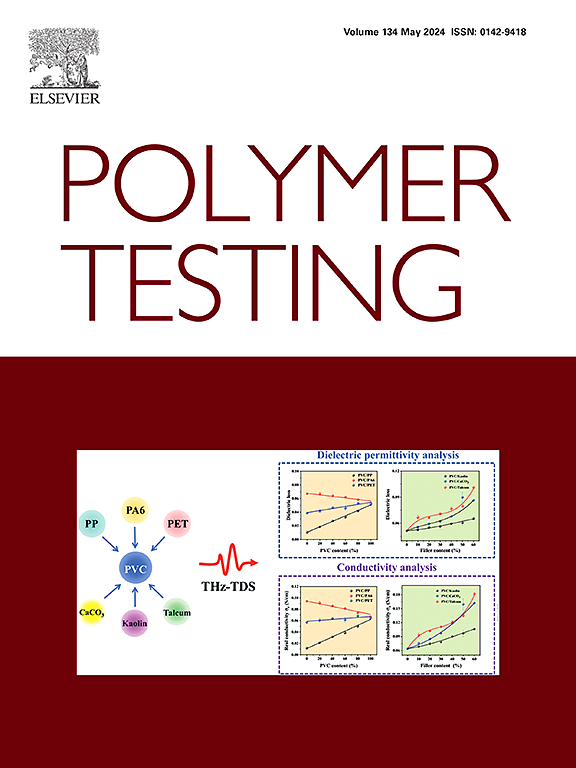Modulated quasi-static tensile testing for advanced characterization of elastomer mechanics
IF 5
2区 材料科学
Q1 MATERIALS SCIENCE, CHARACTERIZATION & TESTING
引用次数: 0
Abstract
Polymers exhibit complex mechanical behavior. Rubber or similar materials are known to display both viscoelasticity and nonlinear elasticity. However, quasi-static mechanical tests alone are insufficient for capturing the viscous component of their response. While Dynamic Mechanical Analysis (DMA) provides valuable insights, it is inadequate to characterize the material's behavior under large deformations fully. A hybrid approach combining a quasi-static tensile test with modulation is proposed to address these limitations. During these tests, deformation fields obtained via Digital Image Correlation (DIC) can be complemented by infrared thermography. The experimental setup is based on a modified DY22 universal testing machine. Tests were performed on a rubber band designed for sports applications. The mechanical results, including the load-elongation relationship and field measurements, reveal distinct differences between the quasi-static and modulated components. These differences are particularly evident in the evolution of the elastic modulus and Poisson's ratio as a function of elongation. The measurements provide detailed insights into the material's mechanical response at each loading stage. The results demonstrate that integrating modulated testing techniques with thermomechanical analysis allows for a more comprehensive characterization of materials for engineering applications.
弹性体力学高级表征的调制准静态拉伸试验
聚合物表现出复杂的力学行为。众所周知,橡胶或类似材料既具有粘弹性又具有非线性弹性。然而,单靠准静态力学试验不足以捕捉其响应的粘性成分。虽然动态力学分析(DMA)提供了有价值的见解,但它不足以充分表征材料在大变形下的行为。提出了一种结合准静态拉伸试验和调制的混合方法来解决这些限制。在这些测试中,通过数字图像相关(DIC)获得的变形场可以通过红外热成像进行补充。实验装置是在改装的DY22型万能试验机上进行的。试验是在一种为体育运动设计的橡皮筋上进行的。力学结果,包括载荷-伸长关系和现场测量,揭示了准静态和调制组件之间的明显差异。这些差异在弹性模量和泊松比作为伸长率的函数的演变中尤为明显。这些测量提供了材料在每个加载阶段的力学响应的详细信息。结果表明,将调制测试技术与热力学分析相结合,可以更全面地表征工程应用中的材料。
本文章由计算机程序翻译,如有差异,请以英文原文为准。
求助全文
约1分钟内获得全文
求助全文
来源期刊

Polymer Testing
工程技术-材料科学:表征与测试
CiteScore
10.70
自引率
5.90%
发文量
328
审稿时长
44 days
期刊介绍:
Polymer Testing focuses on the testing, analysis and characterization of polymer materials, including both synthetic and natural or biobased polymers. Novel testing methods and the testing of novel polymeric materials in bulk, solution and dispersion is covered. In addition, we welcome the submission of the testing of polymeric materials for a wide range of applications and industrial products as well as nanoscale characterization.
The scope includes but is not limited to the following main topics:
Novel testing methods and Chemical analysis
• mechanical, thermal, electrical, chemical, imaging, spectroscopy, scattering and rheology
Physical properties and behaviour of novel polymer systems
• nanoscale properties, morphology, transport properties
Degradation and recycling of polymeric materials when combined with novel testing or characterization methods
• degradation, biodegradation, ageing and fire retardancy
Modelling and Simulation work will be only considered when it is linked to new or previously published experimental results.
 求助内容:
求助内容: 应助结果提醒方式:
应助结果提醒方式:


